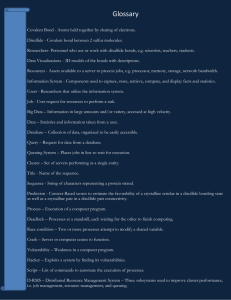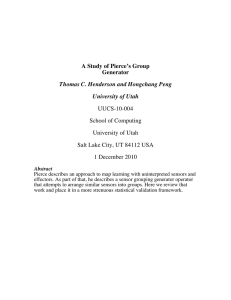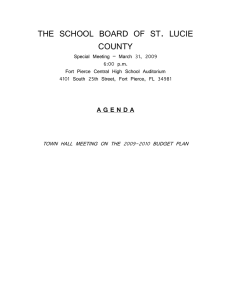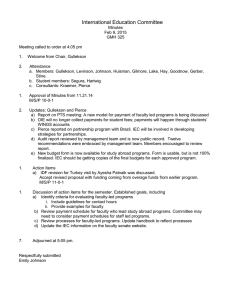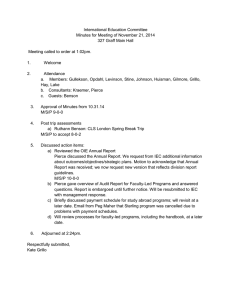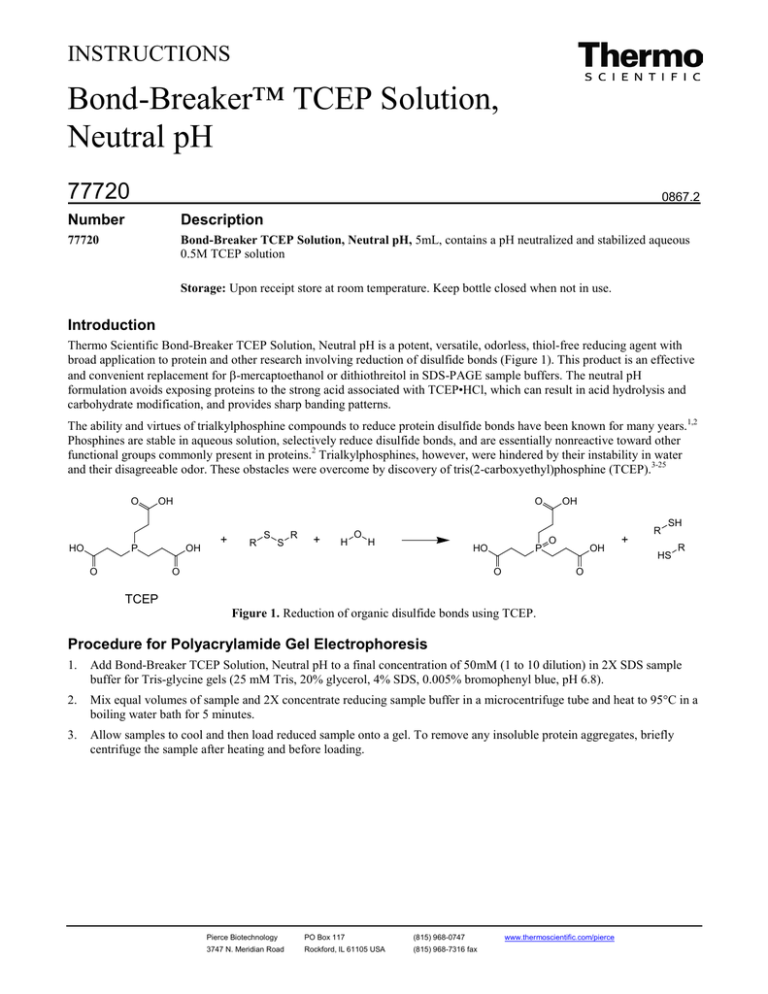
INSTRUCTIONS
Bond-Breaker™ TCEP Solution,
Neutral pH
77720
0867.2
Number
Description
77720
Bond-Breaker TCEP Solution, Neutral pH, 5mL, contains a pH neutralized and stabilized aqueous
0.5M TCEP solution
Storage: Upon receipt store at room temperature. Keep bottle closed when not in use.
Introduction
Thermo Scientific Bond-Breaker TCEP Solution, Neutral pH is a potent, versatile, odorless, thiol-free reducing agent with
broad application to protein and other research involving reduction of disulfide bonds (Figure 1). This product is an effective
and convenient replacement for β-mercaptoethanol or dithiothreitol in SDS-PAGE sample buffers. The neutral pH
formulation avoids exposing proteins to the strong acid associated with TCEP•HCl, which can result in acid hydrolysis and
carbohydrate modification, and provides sharp banding patterns.
The ability and virtues of trialkylphosphine compounds to reduce protein disulfide bonds have been known for many years.1,2
Phosphines are stable in aqueous solution, selectively reduce disulfide bonds, and are essentially nonreactive toward other
functional groups commonly present in proteins.2 Trialkylphosphines, however, were hindered by their instability in water
and their disagreeable odor. These obstacles were overcome by discovery of tris(2-carboxyethyl)phosphine (TCEP).3-25
O
HO
OH
P
O
O
OH
+
R
S
S
R
+
H
O
H
HO
O
P
O
OH
O
OH
+
R
SH
HS
R
O
TCEP
Figure 1. Reduction of organic disulfide bonds using TCEP.
Procedure for Polyacrylamide Gel Electrophoresis
1.
Add Bond-Breaker TCEP Solution, Neutral pH to a final concentration of 50mM (1 to 10 dilution) in 2X SDS sample
buffer for Tris-glycine gels (25 mM Tris, 20% glycerol, 4% SDS, 0.005% bromophenyl blue, pH 6.8).
2.
Mix equal volumes of sample and 2X concentrate reducing sample buffer in a microcentrifuge tube and heat to 95°C in a
boiling water bath for 5 minutes.
3.
Allow samples to cool and then load reduced sample onto a gel. To remove any insoluble protein aggregates, briefly
centrifuge the sample after heating and before loading.
Pierce Biotechnology
PO Box 117
(815) 968-0747
3747 N. Meridian Road
Rockford, lL 61105 USA
(815) 968-7316 fax
www.thermoscientific.com/pierce
Related Thermo Scientific Products
77712
Immobilized TCEP Disulfide Reducing Gel, 5mL
24615
Imperial™ Protein Stain, 1L, coomassie R-250 stain
24590
GelCode™ Blue Stain Reagent, 500mL, coomassie G-250 stain
24612
Pierce™ Silver Stain Kit
24600
Pierce Silver Stain Kit for Mass Spectrometry
24597
Pierce Color Silver Stain Kit
24582
24614
Pierce Zinc Reversible Stain Kit
Pierce Silver Stain Rescue Reagent
25200-44
Precise™ Protein Gels (see catalog or web site for a complete listing)
26681
Pierce Blue Prestained Protein Molecular Weight Marker Mix, 48 single-dose tubes
26691
20408
Pierce 3-Color Prestained Protein Molecular Weight Marker Mix, 48 single-dose tubes
2-Mercaptoethylamine•HCl (2-MEA), 6 × 6mg
20290
DTT, Cleland’s Reagent (dithiothreitol), 5g
20291
Dithiothreitol (DTT), No-Weigh™ format, 48 tubes × 7.7mg
Cited References
1.
2.
3.
4.
5.
6.
7.
8.
9.
10.
11.
12.
13.
14.
15.
16.
17.
18.
19.
20.
21.
22.
23.
24.
Ruegg, U.T and Rudinger, J. (1977). Reductive cleavage of cystine disulfides with tributylphosphine. Methods Enzymol 47:111-26.
Kirley, T.L. (1989). Reduction and fluorescent labeling of cyst(e)ine-containing proteins for subsequent structural analysis. Anal Biochem 180:231.
Burns, J.A., et al. (1991). Selective reduction of disulfides by tris-(2-carboxyethyl)-phosphine. J Org Chem 56:2648-50.
Han, J., et.al. (1999). Tris[2-carboxyethyl]phosphine – A reducing agent with versatile applications including cleavage of disulfide bonds and
quantitation of numerous oxidants. Previews 2(4):16-21.
Han, J., et al. (1993). Modification of catalytic properties of chicken liver fructose 1,6-bisphosphatase by allicin. Biochem Mol Biol Int 31:1007-15.
Han, J.C. and Han, G.Y. (1994). A procedure for quantitative determination of tris(2-carboxyethyl)phosphine, an odorless reducing agent more stable
and effective than dithiothreitol. Anal Biochem 220:5-10.
Mery, J., et al. (1993). Disulfide linkage to polyacrylic resin for automated Fmoc peptide synthesis, immunochemical applications of peptide resin and
mercaptoamide peptide. Int J Pept Protein Res 42:44-52.
Gray, W.R. (1993). Disulfide structures of highly bridged peptides: a new strategy for analysis. Protein Sci 2:1732-48.
Fisher, W.H., et al. (1993). In situ reduction suitable for matrix-assisted laser desorption/ionization and liquid secondary ionization using tris(2carboxyethyl)phosphine. Rapid Commun. Mass Spectrom 7:225-8.
Gozlan, H., et al. (1994). Anoxic LTP is mediated by the redox modulatory site of the NMDA receptor. J Neorophys 72:3017-22.
Gozlan, H., et al. (1995). In CA1 hippocampal neurons, the redox state of NMDA receptors determine LTP expressed by NMDA but not by AMPA
receptors. J Neurophys 73:2612-17.
Bieri, S., et al. (1995). Disulfide bridges of a cysteine-rich repeat of the LDL receptor ligand-binding domain. Biochemistry 34:13059-65.
Tam, J.P., et al. (1995). Peptide synthesis using unprotected peptides through orthogonal coupling methods. Proc Natl Acad Sci USA 92:12485-9.
Blauenstein, P., et al. (1995). Experience with the iodine-123 and technetium-99m labelled anti-granulocyte antibody MAb47: a comparison of
labelling methods. Eur J Nucl Med 22:690-8.
Gorman, J.J., et al. (1996). Use of 2,6-dihydroxyacetophenone for analysis of fragile peptides, disulphide bonding and small proteins by matrixassisted laser desorption/ionization. Rapid Commun Mass Spectrom 10:529-36.
Hirsch, J.C., et al. (1996). Enhanced NMDAR-dependent epileptiform activity is controlled by oxidizing agents in a chronic model of temporal lobe
epilepsy. J Neurosci 76:4185-9.
Quesada, O., et al. (1996). Redox sites of NMDA receptors can modulate epileptiform activity in hippocampal slices from kainic acid-treated rats.
Neurosci Lett 212:171-4.
Kirsch, T., et al. (1996). Cloning, high-yield expression in Escherichia coli, and purification of biologically active HIV-1 Tat protein. Protein Express
Purif 8:75-84.
Haniu, M., et al. (1996). Glial cell line-derived neurotrophic factor: selective reduction of the intermolecular disulfide linkage and characterization of
its disulfide structure. Biochemistry 35:16799-05.
White, C.E., et al. (1996). The fifth epidermal growth factor-like domain of thrombomodulin does not have an epidermal growth factor-like disulfide
bonding pattern. Proc Natl Acad Sci 93:10177-82.
Xiao, Y., et al. (1997). Involvement of disulfide bonds in the renal sodium/phosphate co-transporter NaPi-2. Biochem J 323:401-8.
Wu, J. and Watson, J.T. (1997). A novel methodology for assignment of disulfide bond pairings in proteins. Protein Sci 6:391-8.
Bernard, C.L., et al. (1997). Redox modulation of synaptic responses and plasticity in rat CA1 hippocampal neurons. Exp Brain Res 113:343-52.
Riddles, P.W., et al. (1979). Ellman's reagent: 5,5´-dithiobis (2-nitroben-zoic acid) - A reexamination. Anal Biochem 94:75-81.
Pierce Biotechnology
PO Box 117
(815) 968-0747
3747 N. Meridian Road
Rockford, lL 61105 USA
(815) 968-7316 fax
2
www.thermoscientific.com/pierce
25. Cavallito, C.G., et al. (1944). Allicin, the antibacterial principle of Allium salivum. II. Determination of the chemical structure. J Am Chem Soc
66:1952-4.
This product (“Product”) is warranted to operate or perform substantially in conformance with published Product specifications in effect at the time of sale,
as set forth in the Product documentation, specifications and/or accompanying package inserts (“Documentation”) and to be free from defects in material and
workmanship. Unless otherwise expressly authorized in writing, Products are supplied for research use only. No claim of suitability for use in applications
regulated by FDA is made. The warranty provided herein is valid only when used by properly trained individuals. Unless otherwise stated in the
Documentation, this warranty is limited to one year from date of shipment when the Product is subjected to normal, proper and intended usage. This
warranty does not extend to anyone other than the original purchaser of the Product (“Buyer”).
No other warranties, express or implied, are granted, including without limitation, implied warranties of merchantability, fitness for any particular
purpose, or non infringement. Buyer’s exclusive remedy for non-conforming Products during the warranty period is limited to replacement of or
refund for the non-conforming Product(s).
There is no obligation to replace Products as the result of (i) accident, disaster or event of force majeure, (ii) misuse, fault or negligence of or by Buyer, (iii)
use of the Products in a manner for which they were not designed, or (iv) improper storage and handling of the Products.
Current product instructions are available at www.thermoscientific.com/pierce. For a faxed copy, call 800-874-3723 or contact your local distributor.
© 2012 Thermo Fisher Scientific Inc. All rights reserved. Unless otherwise indicated, all trademarks are property of Thermo Fisher Scientific Inc. and its
subsidiaries. Printed in the USA.
Pierce Biotechnology
PO Box 117
(815) 968-0747
3747 N. Meridian Road
Rockford, lL 61105 USA
(815) 968-7316 fax
3
www.thermoscientific.com/pierce

